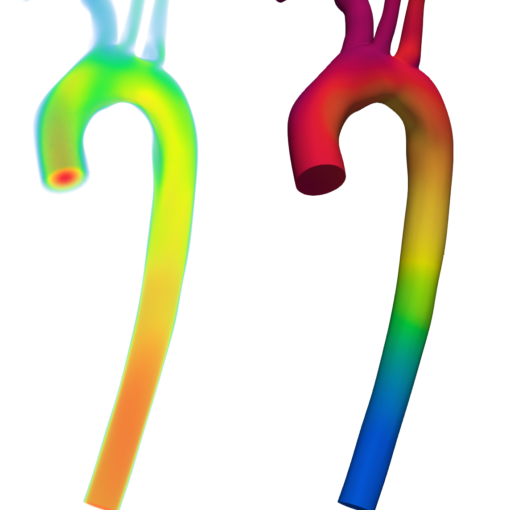A new MOX report entitled “Stabilization of staggered time discretization schemes for 0D-3D fluid-structure interaction problems” by Regazzoni, F. has appeared in the MOX Report Collection.
The report can be donwloaded at the following link:
https://www.mate.polimi.it/biblioteca/add/qmox/17/2022.pdf
Abstract: In this paper we analyze the numerical oscillations affecting time-staggered schemes for 0D-3D fluid-structure interaction (FSI) problems, which arise e.g. in the field of cardiovascular modeling, and we propose a novel stabilized scheme that cures this issue. We study two staggered schemes. In the first one, the 0D fluid model prescribes the pressure to the 3D structural mechanics model and receives the flow. In the second one, on the contrary, the fluid model receives the pressure and prescribes the flow. These schemes are respectively known, in the FSI literature, as Dirichlet-Neumann and Neumann-Dirichlet schemes, borrowing these terms from domain decomposition methods, although here a single iteration is performed before moving on to the next time step. Should the fluid be enclosed in a cavity, the Dirichlet-Neumann scheme is affected by non-physical oscillations whose origin lies in the balloon dilemma, for which we provide an algebraic i! nterpreta tion. Moreover, we show that also the Neumann-Dirichlet scheme can be unstable for a range of parameter choices. Surprisingly, increasing either the viscous dissipation or the inertia of the structure favours the onset of oscillations. Our analysis provides an explanation for this fact and yields sharp stability bounds on the time step size. Inspired by physical considerations on the onset of oscillations, we propose a numerically consistent stabilization term for the Neumann-Dirichlet scheme. We prove that our proposed stabilized scheme is absolutely stable for any choice of time step size. These results are verified by several numerical tests. Finally, we apply the proposed stabilized scheme to an important problem in cardiac electromechanics, namely the coupling between a 3D model and a closed-loop lumped-parameter model of blood circulation. In this setting, our proposed scheme successfully removes the non-physical oscillations that would otherwise affect the numerical! solution .



